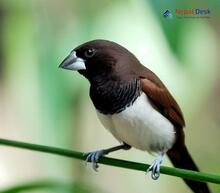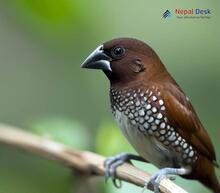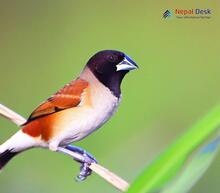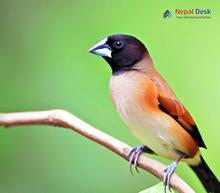Nepal is a country known for its rich biodiversity and picturesque landscapes. Among the myriad flora and fauna that inhabit this beautiful nation, the birds of the Lonchura genus have emerged as a fascinating subject for birdwatchers and nature enthusiasts alike. Here, we will delve into the captivating world of these small passerine birds and explore their unique characteristics, adaptations, and significance in Nepal's diverse ecosystem.
The Lonchura Genus – A Brief Introduction
Belonging to the family Estrildidae, the Lonchura genus comprises over 30 species of small, seed-eating birds that are predominantly found across Africa and Asia. Also known as munias or mannikins, these species exhibit a range of striking plumage patterns and colors, making them visually appealing and easy to recognize in their respective habitats.
Distinct Features of Lonchura Birds
One of the most notable features of birds within the Lonchura genus is their compact size, which typically ranges between 10-12 centimeters in length. They have sharply pointed bills that enable them to effectively pick out seeds from grasses and other plants. These birds also possess short tails and rounded wings, further enhancing their agility as they navigate their surroundings.
Many species within the Lonchura genus display sexually monomorphic plumage, which means both males and females share similar physical appearances. Some examples include the black-faced munia (Lonchura molucca) and white-rumped munia (Lonchura striata). However, there are others like chestnut-flanked white-eye (Lonchura fuscans) with distinct male plumage.
Lonchura Species Found in Nepal
Nepal boasts an impressive array of bird species thanks to its varied topography and climatic zones. Several species from the Lonchura genus grace the Nepal's avian landscape, including:
Scaly-breasted munia (Lonchura punctulata): Commonly found in grasslands, farmlands, and scrub-covered areas, this species displays an attractive pattern of dark scales on its pale breast.
Nepal House Bunting (Lonchura Nepalensis): Endemic to the Himalayan region, the Nepal house bunting can be identified by its striking red forehead and chestnut-brown body.
White-rumped munia (Lonchura striata): With its striking black-and-white plumage pattern, the white-rumped munia inhabits open grassy areas and lowland plains across Nepal.
Conservation Efforts and the Importance of Awareness
Though many Lonchura species thrive in diverse habitats, some populations can be adversely affected by habitat loss, deforestation, and other anthropogenic factors. Encouraging local communities to value these bird species as symbols of their natural heritage can help drive conservation endeavors and ensure the survival of these fascinating creatures.
In conclusion, the Lonchura genus offers a captivating glimpse into the diversity of bird life in Nepal. By raising awareness about these species and promoting responsible ecotourism practices, we can ensure that future generations continue to enjoy the beauty and majesty of Nepal's unique avian treasures.




